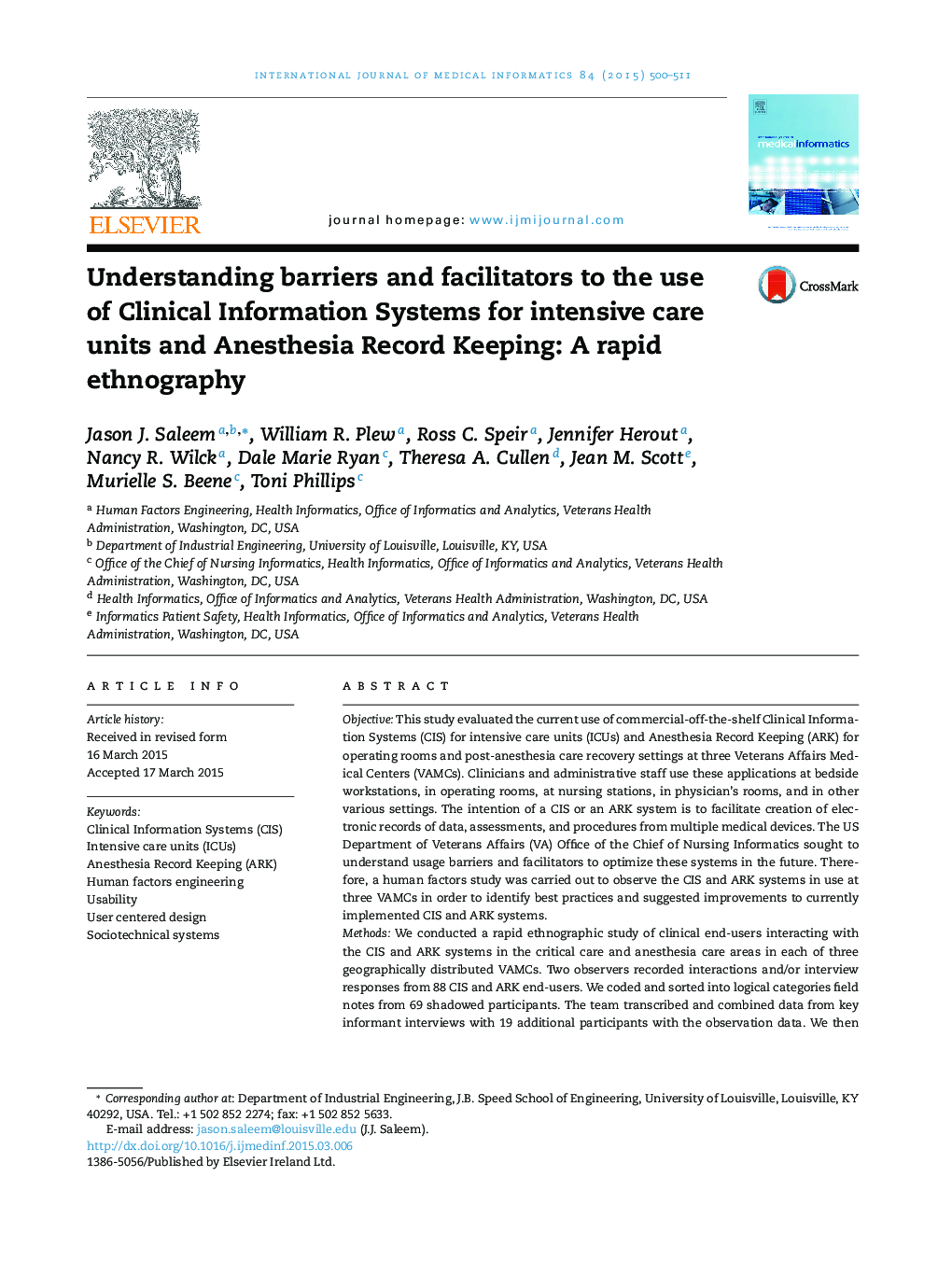| کد مقاله | کد نشریه | سال انتشار | مقاله انگلیسی | نسخه تمام متن |
|---|---|---|---|---|
| 516485 | 1449109 | 2015 | 12 صفحه PDF | دانلود رایگان |
• We evaluated applications for intensive care units and anesthesia care settings.
• We identified barriers that explain challenges with adoption of these applications.
• Facilitators included automation and a dedicated facility-level CIS-ARK Coordinator.
ObjectiveThis study evaluated the current use of commercial-off-the-shelf Clinical Information Systems (CIS) for intensive care units (ICUs) and Anesthesia Record Keeping (ARK) for operating rooms and post-anesthesia care recovery settings at three Veterans Affairs Medical Centers (VAMCs). Clinicians and administrative staff use these applications at bedside workstations, in operating rooms, at nursing stations, in physician's rooms, and in other various settings. The intention of a CIS or an ARK system is to facilitate creation of electronic records of data, assessments, and procedures from multiple medical devices. The US Department of Veterans Affairs (VA) Office of the Chief of Nursing Informatics sought to understand usage barriers and facilitators to optimize these systems in the future. Therefore, a human factors study was carried out to observe the CIS and ARK systems in use at three VAMCs in order to identify best practices and suggested improvements to currently implemented CIS and ARK systems.MethodsWe conducted a rapid ethnographic study of clinical end-users interacting with the CIS and ARK systems in the critical care and anesthesia care areas in each of three geographically distributed VAMCs. Two observers recorded interactions and/or interview responses from 88 CIS and ARK end-users. We coded and sorted into logical categories field notes from 69 shadowed participants. The team transcribed and combined data from key informant interviews with 19 additional participants with the observation data. We then integrated findings across observations into meaningful patterns and abstracted the data into themes, which translated directly to barriers to effective adoption and optimization of the CIS and ARK systems.ResultsEffective optimization of the CIS and ARK systems was impeded by: (1) integration issues with other software systems; (2) poor usability; (3) software challenges; (4) hardware challenges; (5) training concerns; (6) unclear roles and lack of coordination among stakeholders; and (7) insufficient technical support. Many of these barriers are multi-faceted and have associated sub-barriers, which are described in detail along with relevant quotes from participants. In addition, regionalized purchases of different CIS and ARK systems, as opposed to enterprise level purchases, contributed to some of the identified barriers. Facilitators to system use included (1) automation and (2) a dedicated facility-level CIS-ARK Coordinator.ConclusionsWe identified barriers that explain some of the challenges with the optimization of the CIS and ARK commercial systems across the Veterans Health Administration (VHA). To help address these barriers, and evolve them into facilitators, we categorized report findings as (1) interface and system-level changes that vendors or VA healthcare systems can implement; (2) implementation factors under VA control and not under VA control; and (3) factors that may be used to inform future application purchases. We outline several recommendations for improved adoption of CIS and ARK systems and further recommend that human factors engineering and usability requirements become an integral part of VA health information technology (HIT) application procurement, customization, and implementation in order to help eliminate or mitigate some of the barriers of use identified in this study. Human factors engineering methods can be utilized to apply a user-centered approach to application requirements specification, application evaluation, system integration, and application implementation.
Journal: International Journal of Medical Informatics - Volume 84, Issue 7, July 2015, Pages 500–511
